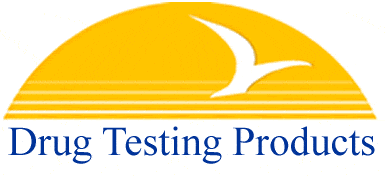
|
Home
|
View Cart |
Shipping | Privacy |
Drug Testing Help |
|
|
|
|
||||
 |
|
|
drug test * drug testing * employee drug testing * urine test * marijuana drug test * urine drug test * hair drug test * drug test * drug test kit * saliva drug test * panel drug testing | ||
|
|
|
||||||
|
Overview of Drug Testing On January 4, 1987, an Amtrak train and a Conrail train collided near Chase, Maryland. In the accident, 16 people were killed and 170 more were injured. The total financial cost to the two railway systems was estimated at $100 million. Investigators found that the engineer of the Conrail train had smoked marijuana before beginning his run. He ran through three stop signals before the collision occurred. The engineer's use of marijuana was discovered when he was subjected to a mandatory drug test following the accident. In a testimonial on the benefits of workplace drug testing, the employer of thirty people at a structural steel plant in Florida states the following: "This year we will spend $1,500 to run the drug testing program and will save about $35,000, primarily in workers' compensation premiums. . . . There is no question we have a higher caliber workforce today. . . . I simply don't understand why any company would hesitate to have a drug-free workplace. . . . It's the right thing to do, and it's financially beneficial too." Drug use in the workplace is a serious problem in the United States today, and drug testing is one way to deal with that issue. It appears that many Americans have accepted that argument. In 1995, the Gallup Organization conducted a survey on the nation's most serious problems. 57% of all respondents ranked drug abuse "nine" or "ten" on a scale of one to ten in importance. Just under 10% called drug abuse "the most important problem facing the nation today." That percentage had remained at the 5- to 10 percent level for more than a decade. There are many kinds of problems associated with illegal drug use. For example, many drug users resort to burglary, prostitution, or other illegal activities to get the money they need to maintain their drug habits. Also, those who sell drugs sometimes wage all-out wars to protect their "turf," the neighborhoods in which they conduct their business. In addition, intravenous drug use is a major source of HIV infections and other health problems. For many Americans, however, the greatest cause of concern about illegal drug use is the problems it creates in the workplace. People who use illegal drugs may represent a threat to the general public whom they serve. The railroad engineer described in the first anecdote above is an example. Similarly, the thought of an airplane pilot using cocaine just before takeoff is frightening to anyone. Drug users may also represent less obvious risks to their coworkers and to the general public. The assembly-line worker who comes to the job slightly confused after smoking a marijuana cigarette may make errors in his or her work that are difficult to detect until much later in the production process. Or a drug user may miss many days of work while recovering from the aftereffects of drug use. Employers continue to look for ways to reduce the risks to their businesses created by illegal drug users. More Sources:
| |||||||